Are AI Tools Helpful For Content Creation? My Honest Experience & What You Should Know
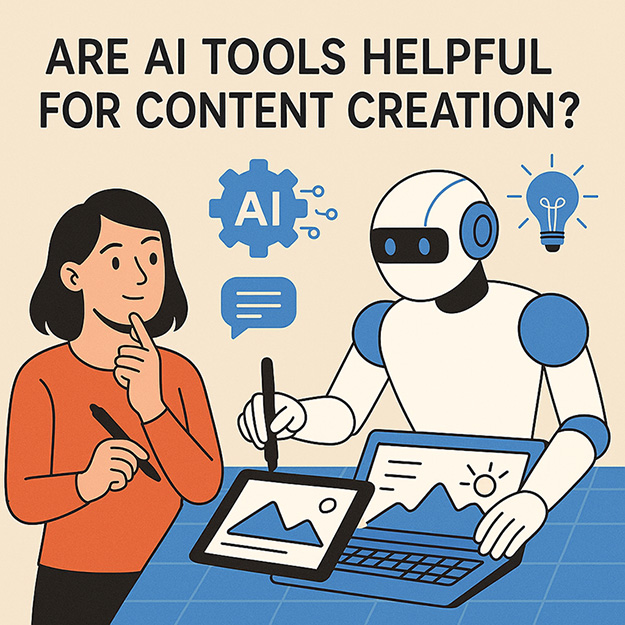
I used to wonder, Are AI tools helpful for content creation? So, I gave them a real shot — not just once, but across dozens of articles. Some results blew me away. Others… needed serious human rescue. In this post, I’ll share what AI can and can’t do in content creation, whether it can really create good content, and how to use it without losing your voice. Stick with me — what I found might surprise you.
Are AI Tools Helpful For Content Creation?
At first, I was skeptical. Could a machine really help me write something that feels human? I’ve spent years honing my voice, crafting stories, and building trust with readers. The idea of letting a tool write for me felt like giving the wheel to a robot on a mountain road.
But I didn’t want to knock it before I tried it. So, I tested AI tools like ChatGPT, Jasper, and Grammarly across real projects — client blogs, personal stories, even sales pages. And here’s what I learned: AI can be incredibly helpful — but only when you treat it as a writing partner, not a replacement.
The truth is, AI tools are fast, consistent, and surprisingly smart. They can draft outlines in seconds, catch grammar slips, and even suggest catchy headlines. But do they understand your audience’s pain points? Can they tug at a reader’s heart or tell a story that sticks? Not quite.
In short, AI tools are helpful for content creation — but only if you know how to guide them. They’re like having a smart intern: great at organizing and speeding things up, but still in need of a human touch. That’s why the real magic happens when humans and machines work together.
What AI Can — and Can’t — Do in Content Creation
Let’s start simple: AI tools are like calculators for words. You give them a prompt, and they respond with sentences, paragraphs, even full articles — all within seconds. Tools like ChatGPT, Jasper, and others work by predicting what word comes next based on patterns from massive amounts of data.
They’re fast, efficient, and rarely miss a comma. Need a blog outline? Done. Grammar check? Flawless. Want a list of blog titles? You’ll get 10 in under 10 seconds. AI is great at structure, speed, and surface-level clarity.
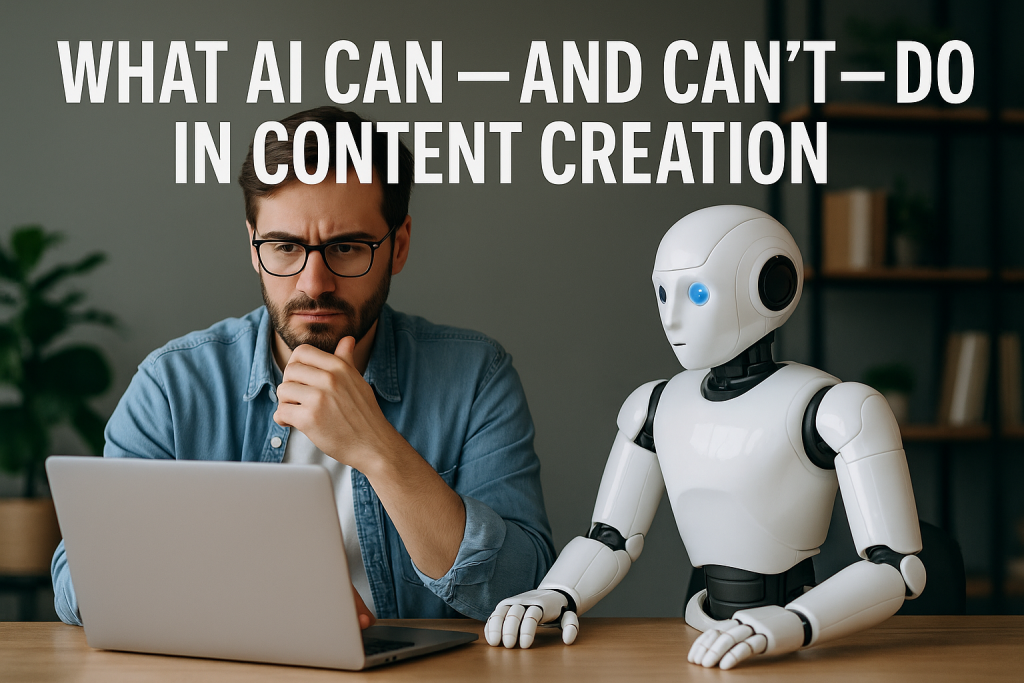
But that’s also where things get tricky.
AI can write technically correct content, but it often misses the why behind the words. It doesn’t understand tone the way a human does. It won’t feel a reader’s frustration or joy. It can’t pull from life, because it hasn’t lived one.
I still remember my first AI-generated blog draft. It looked polished at a glance — clean formatting, catchy phrases. But after a second read, it felt… empty. The sentences flowed, but the soul was missing.
That’s where human writers shine. We bring nuance, lived experience, and emotion — things machines just can’t fake (yet). And while AI can mimic empathy, it doesn’t feel anything. That gap becomes obvious in content meant to move people — like personal blogs, brand storytelling, or heartfelt messages.
AI writing tools are excellent for speed and structure, but they can’t replace human insight, tone, or emotional connection.
In short, AI helps you write faster — but it’s not enough to write better. To create content that truly connects, you still need a human mind to shape the message and a human heart to guide the voice.
Can AI Tools Really Create Good Content?
That depends on how you define “good.” For me, good content feels real. It speaks to people. It teaches something useful, makes you smile, or stirs a little emotion. It’s not just about spelling things right — it’s about saying the right things, in the right way, at the right time.
I once ran a fun little test. I asked an AI to write a blog post on a topic I knew inside out — one I had written before. The result? Technically fine. It covered the basics, had clean grammar, and followed a logical flow. But it lacked punch. No lived insight. No “aha” moment. Just… words.
Then I rewrote the same post from my own experience — added a quick story, a small confession, and a tip I learned the hard way. That’s when it clicked. The AI version informed. The human version connected.
And I’m not alone. A recent HubSpot survey found that while many marketers use AI for content creation, most still prefer human oversight to ensure the final version is engaging and brand-aligned. So yes — AI tools can create good content, especially when used for structure and support. But if you want great content? Human creativity is still the secret sauce.
AI can create helpful content, but only humans can make it truly resonate.
My advice? Use AI for the bones — outlines, facts, quick drafts. Then add your soul. That’s how you turn okay content into something worth reading — and remembering.
Human vs Machine: Who Wins the Content Game?
If writing were a sport, I’d say humans and machines are on the same team—but playing very different positions.

AI is fast, efficient, and always ready. I once had a deadline creeping up on me, and in a pinch, I asked ChatGPT to build the first draft. It gave me a full article in under five minutes. That would’ve taken me at least two hours. Sounds amazing, right? Well, kind of.
Because when I read the draft, it was clean… but flat. It missed the little things—like how it feels to launch your first blog or the doubt that creeps in before clicking “publish.” Those are the pieces that make content relatable. They can’t come from an algorithm. They come from living it.
AI wins in speed and structure, but humans win in soul and storytelling.
What surprised me most is how powerful it is when both work together. That rushed draft I got from AI? I used it. But I rewrote about 40% of it—adding personal stories, reworking sentences, and fine-tuning the message. Still, it saved me hours.
So, who wins the content game? Neither. The best content happens when humans and machines collaborate. AI lays the groundwork. You bring the voice, the depth, and the story.
The real magic? It’s in the blend.
How Much of a Great Blog Can Be Done by AI?
AI can do a lot. It helps you start fast. It gives you titles, outlines, and even whole drafts. It’s like a fast-moving train that gets you on the track when you feel stuck.
AI can write about 70% of a blog — fast and clean. But the best part still needs you.
When I’m in a rush, I let AI write the first version. It gives me ideas, smooth lines, and simple flow. That saves me hours. But then I read it. And you know what? It’s flat. No voice. No fun. No story. It’s like reading a school book when you wanted a great story.
That’s where I step in. I add my thoughts. I fix the tone. I put in jokes, stories, or things I’ve lived through. That turns a plain post into one people enjoy.
My rule? Use AI for the bones, and use your voice for the soul. I trust AI with the easy part — the frame. But the heart? That’s all me.
Pro Tip: If it sounds too smooth, it might be too fake. Give it your truth. That’s what people remember.
How to Use AI in Your Content (Without Ruining It)
AI is a great helper — but only if you stay in control. Think of it like using a power tool. It makes the job faster, but if you’re not careful, it can mess things up too.
To use AI well, guide it. Don’t let it lead.
Here’s how I use AI in my writing process — step by step.
1. Brainstorming Ideas
When I feel stuck, I ask ChatGPT for blog ideas. It gives me 10 in seconds. Some are off, but a few spark real inspiration.
AI is great for fast ideas. Just filter the good ones from the rest.
I never take the list as-is. I mix, match, and tweak. That’s how I keep it fresh and real.
2. Creating Outlines
Once I have a topic, I use AI to build an outline. It’s like drawing a map before a road trip.
A clear outline saves time — and keeps your content focused.
The AI helps me spot gaps, fix the flow, and plan the big picture before I write. That way, I never get lost mid-post.
3. Drafting Intros and Conclusions
Sometimes, starting or ending a post is the hardest part. AI helps me break that block.
AI can write smooth intros and wrap things up quickly.
But I always rewrite them a little — adding a personal line, a quick story, or a question. That’s what makes it me.
4. Editing for Clarity
After I write, I run the draft through Grammarly or another tool. It helps me spot long sentences, hard words, or grammar slips.
AI is perfect for cleanup. It makes your content crisp and clear.
Still, I read it out loud to check the rhythm. If it doesn’t sound human, I tweak it.
5. Tools I Personally Recommend
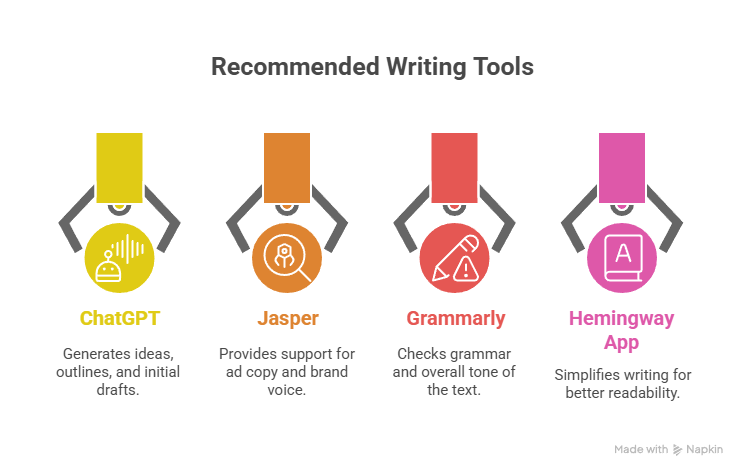
Here are my go-to tools:
- ChatGPT – For ideas, outlines, and first drafts
- Jasper – For ad copy or brand voice support
- Grammarly – For grammar and tone check
- Hemingway App – For keeping things simple
Pick the tools that fit your style. You don’t need them all.
6. Mistakes to Avoid

Here’s where people mess up:
- Relying too much on AI
- Copying AI drafts without edits
- Stuffing in keywords just to rank
Let AI help — but let your voice lead. That’s how content wins trust.
Always check the final draft. Add your story. Fix the tone. Make it sound like you.
Final Tip: AI is your assistant, not your author. Use it to speed things up — but don’t let it steal your voice.
Is AI-Written Content Just Plagiarism — or a New Art Form?
This is the big question, right? The first time I used AI to write something, I paused and thought: Wait… is this cheating? It felt a little weird. Like I was borrowing someone else’s voice — even though the words were brand new.
AI-generated content is not plagiarism — but it still needs your human touch.
Let me explain why.
AI Doesn’t Copy — It Predicts
AI doesn’t search the internet and pull lines from blogs. It doesn’t grab chunks of text and paste them into your post. Instead, it works by predicting what word comes next based on patterns it learned from lots of examples.
AI uses prediction, not plagiarism. It builds new sentences — not copied ones.
Think of it like a songwriter who’s heard a million songs. They can create something fresh, but it still sounds familiar. That’s how AI writes — a remix of patterns, not a copy-paste job.
But Is It Creative?
That depends. AI can be clever — it can write poems, jokes, and even song lyrics. But true creativity? That spark that comes from lived experience or emotion? That’s still ours.
AI can mimic creativity, but it can’t feel what it writes.
For example, I once asked AI to write a post about burnout. The facts were there. The advice was okay. But it missed the raw feeling — the “I’ve been there” voice that connects with someone who’s hurting. I added a short story from my own life, and boom — the post finally hit home.
Let’s Talk About Originality Scores
I use plagiarism checkers on every AI draft. Most times, the originality score is 95–100%. That’s clean. Still, I always rewrite chunks to sound more like me — my tone, my rhythm, my slang.
AI content can pass originality tests — but it needs edits to feel original.
A few tweaks go a long way. Replace flat phrases. Add real examples. Change that robotic tone into something warm and human.
So… Is It Art or Just a Tool?
I say it’s both. Think of AI as a paintbrush. On its own, it’s just a tool. But in your hand, with your vision? It can help you create something beautiful.
It’s not about who typed the words. It’s about what those words do.
If the post helps someone, moves them, or makes them think — does it really matter who (or what) wrote the first draft?
Final Thought: Write with AI — But Make It Yours
AI is not the villain here. It’s not stealing or cheating. It’s just helping. What matters is what you do with what it gives you.
So no — AI content isn’t plagiarism. But it’s also not a masterpiece out of the box.
Use it wisely. Shape it with care. Let your story shine through.
That’s where the art lives — in you.
Final Thoughts — Is the Creator Still King?
Let’s be real. With all the buzz around AI, it’s easy to wonder: Do human writers still matter?
✅ Yes — more than ever.
AI can write fast. It can sound smart. It can even mimic style. But it can’t feel. It doesn’t know what heartbreak feels like. It’s never launched a blog, stayed up editing till 3 AM, or smiled when a post finally clicked with a reader.
That’s the stuff only you can bring.
Your Voice Is Your Superpower
I’ve used AI to write dozens of drafts. It’s a lifesaver when I’m short on time or stuck on ideas. But the best parts of every post? They come from me — my struggles, my little wins, my point of view.
AI can help, but it can’t be you. That’s your edge.
Readers connect with realness. They want stories. They want honesty. Even if the grammar isn’t perfect, what matters most is the voice behind the words.
AI Is Just the Tool — You’re the Artist
Think of AI like a camera. Everyone has access to one now, right? But not everyone can take a photo that tells a story. It’s the same with content. Tools help, but talent leads.
The future of content isn’t AI vs. human. It’s AI + human.
You guide. AI supports. That’s the winning combo.
Try It. Edit It. Own It.
Here’s my advice: Don’t be afraid to use AI. Try it out. See what it gives you. But then edit it with heart. Add your voice. Share your take. That’s when the words come alive.
Great content isn’t about how fast you write — it’s about how true it feels.
In the end, the creator — you — is still king. And with AI by your side? You’re faster, sharper, and even more unstoppable.
Final Thoughts — Is the Creator Still King?
Let’s be real. With all the buzz around AI, it’s easy to wonder: Do human writers still matter?
✅ Yes — more than ever.
AI can write fast. It can sound smart. It can even mimic style. But it can’t feel. It doesn’t know what heartbreak feels like. It’s never launched a blog, stayed up editing till 3 AM, or smiled when a post finally clicked with a reader.
That’s the stuff only you can bring.
Your Voice Is Your Superpower
I’ve used AI to write dozens of drafts. It’s a lifesaver when I’m short on time or stuck on ideas. But the best parts of every post? They come from me — my struggles, my little wins, my point of view.
AI can help, but it can’t be you. That’s your edge.
Readers connect with realness. They want stories. They want honesty. Even if the grammar isn’t perfect, what matters most is the voice behind the words.
AI Is Just the Tool — You’re the Artist
Think of AI like a camera. Everyone has access to one now, right? But not everyone can take a photo that tells a story. It’s the same with content. Tools help, but talent leads.
The future of content isn’t AI vs. human. It’s AI + human.
You guide. AI supports. That’s the winning combo.
Try It. Edit It. Own It.
Here’s my advice: Don’t be afraid to use AI. Try it out. See what it gives you. But then edit it with heart. Add your voice. Share your take. That’s when the words come alive.
Great content isn’t about how fast you write — it’s about how true it feels.
In the end, the creator — you — is still king. And with AI by your side? You’re faster, sharper, and even more unstoppable.
Pros and Cons of AI Tools for Content Creation
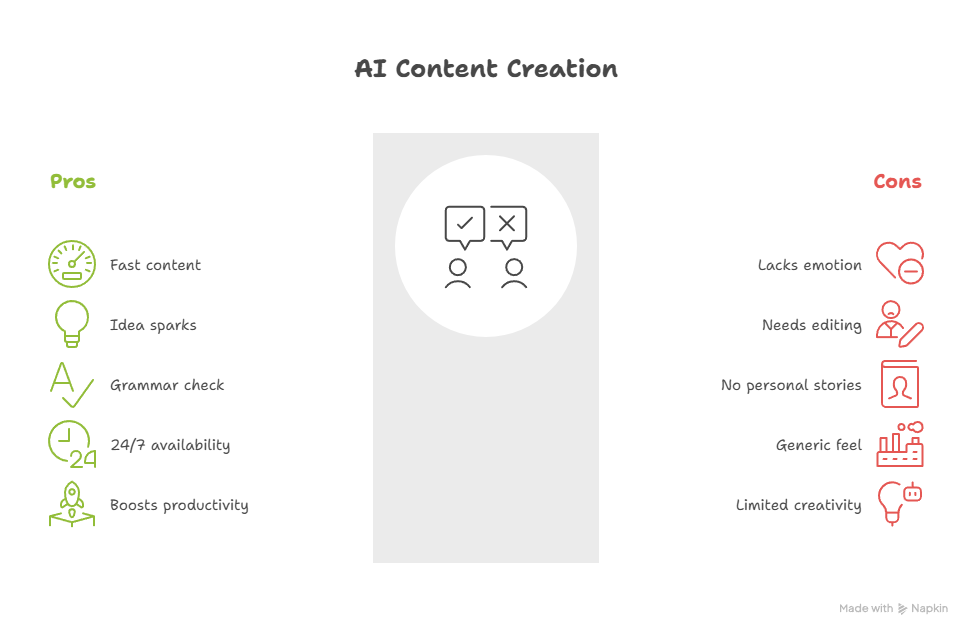
| Pros | Cons |
| Fast content generation | Lacks emotional depth |
| Great for outlines and idea sparks | Needs heavy human editing |
| Good at grammar and formatting | Can’t tell stories with personal experience |
| Available 24/7 with no burnout | Can feel generic or robotic |
| Boosts productivity and efficiency | Limited creativity and nuance |
| Supports SEO with keyword ideas | Overuse can hurt brand authenticity |
FAQs — AI Tools for Content Creation
Q1: Are AI writing tools better than human writers?
No — but they’re great assistants.
AI writing tools are fast and helpful for things like outlines, drafts, and grammar. But they can’t replace the emotional depth or creativity of a real writer. Think of AI as your writing buddy, not your replacement.
Q2: Can I rank on Google with AI-generated content?
Yes — if it’s edited and valuable.
Google ranks content based on quality, not how it was made. If you use AI to create helpful, original, and well-edited content, it can rank just fine. Just avoid spammy or unedited AI text.
Q3: How do I avoid plagiarism when using AI tools?
Edit and personalize everything AI gives you.
AI doesn’t copy — it predicts. But to avoid accidental overlap, always check your content with plagiarism tools. Rewrite, add your insights, and make it sound like you.
Q4: What are the best AI tools for content creation?
My top picks:
- ChatGPT – Great for brainstorming and drafts
- Jasper – Good for marketing and brand tone
- Grammarly – Best for grammar and tone checks
- Hemingway App – Helps simplify your writing
Use what fits your workflow — you don’t need them all.
Q5: Is AI content allowed on blogs or business websites?
Yes, as long as it adds value and follows best practices.
AI content is fine to publish if it’s helpful, unique, and clearly written for people. Google’s guidelines focus on quality — not whether a human or machine wrote it.


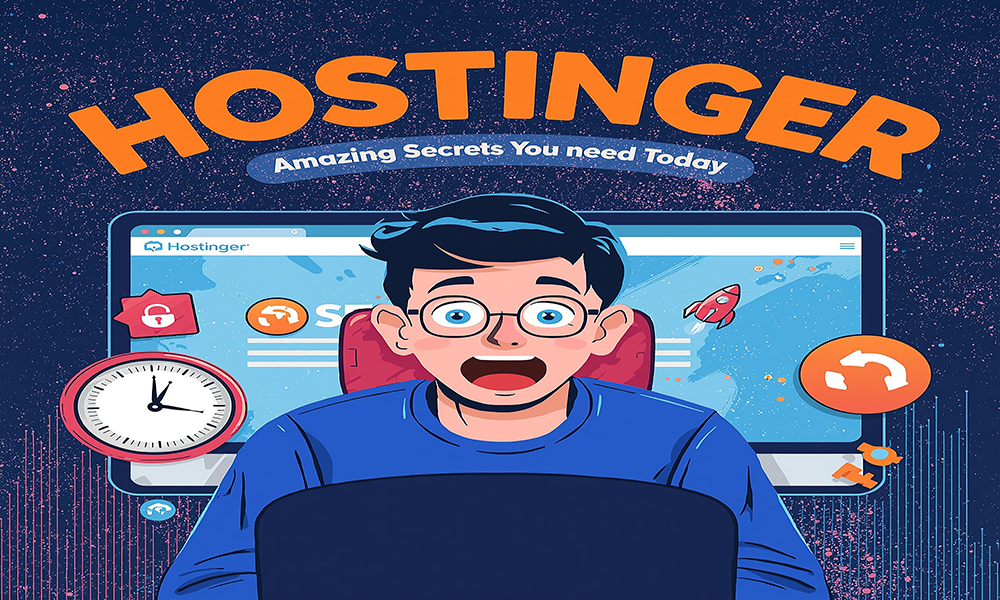
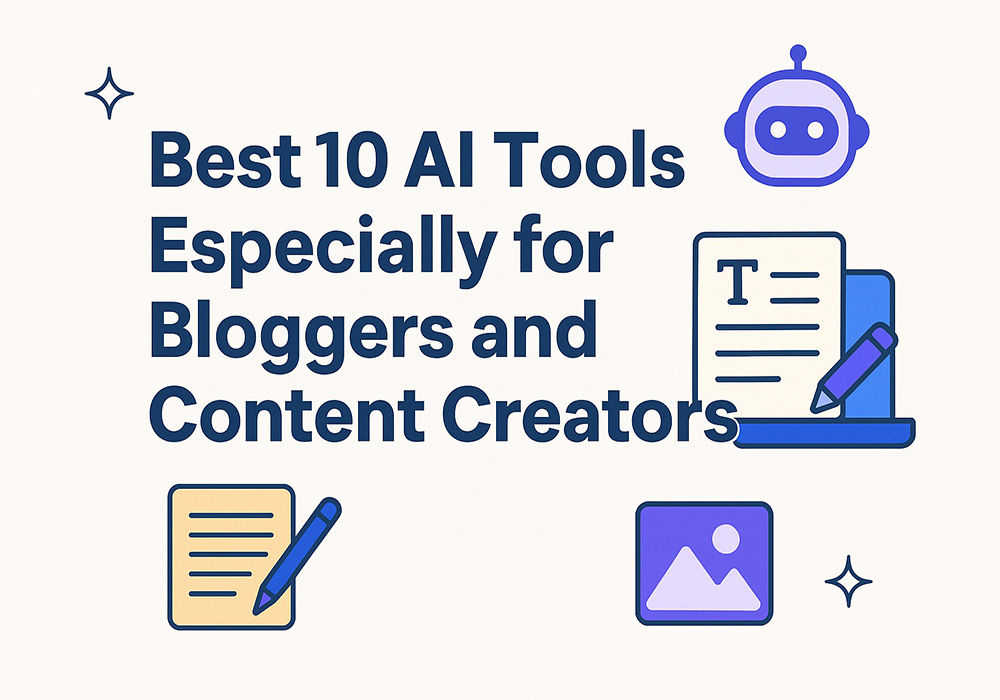
hzoxu9
fy6tv1
4rna0o
zhi6na
e3fhlh
5uxnea
xfw595
wq7ddj
yrj8xb
goehre
3re2dx
https://t.me/s/official_1win_aviator/85
https://t.me/official_1win_aviator/236
https://t.me/s/ef_beef